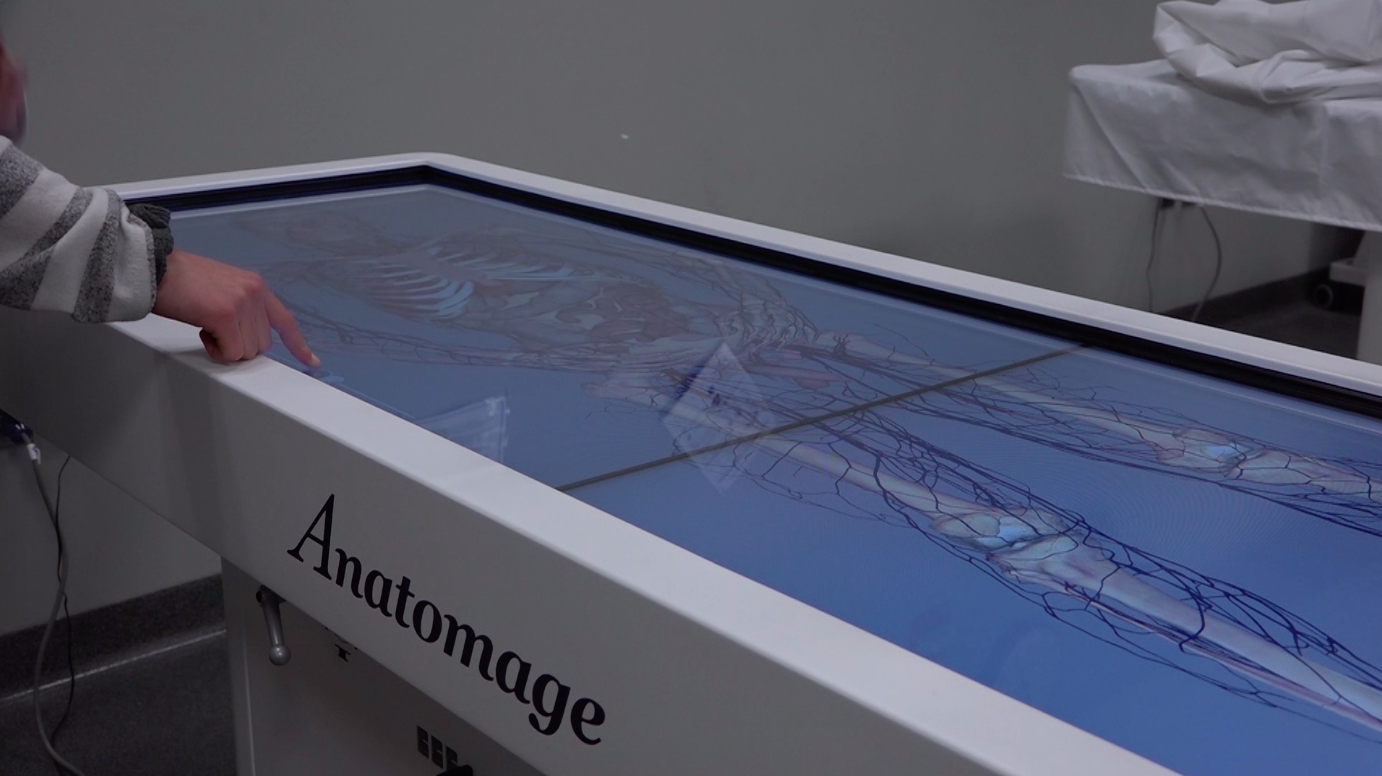St. Thomas became the first institution in the Twin Cities to obtain a digital cadaver table for student use in associate professor Lesley Scibora’s human anatomy classroom and the Anderson Athletic and Recreation Complex in March.
The digital cadaver, made by Anatomage Inc., is a large table with a computer touch screen that has software built in to visualize the human body and its functions in a digital format. It shows various layers of the human body.
“The Anatomage table allows us to perform a dissection virtually which overcomes the limitations of using plastic models or looking at images on paper,” Scibora said. “It allows students to visualize the body in three dimensions and see the layers of the body.”
Anatomage, a California based corporation, is “a leading medical device company driving innovation in the healthcare and medical imaging industries,” according to its corporate website.
“We help great programs become better,” Dax Leepart, a spokesperson for Anatomage said. “Whether it’s elementary schools all the way up to the Mayo Clinic, they’re all using the same Anatomage technology.”
Scibora’s students use the technology to quiz themselves on parts of the human body with games that are built into the table and dissect parts of the body electronically.
“We would be just using plastic models or watching videos before, but this is more hands on,” senior Zach Erickson said.
Erickson said the class has not had a lot of time to work with the new tables, but time will be set up outside of class where students can come in to practice the table’s features.
“There’s so much extra that we have not seen yet,” Erickson said. “What we’ve done is just the tip of the iceberg.”
Students also enjoy the ability to view a bone from all angles, something that is difficult to do with a plastic skeleton model.
“You can’t really do anything with [a plastic skeleton] because they’re just stuck together,” junior Ussama Mohamed said. “[With the table], you can pick one bone, rotate it and see the different parts of that bone. It’s super handy.”
Anatomage tables are widely used by colleges and hospitals throughout the globe, and according to their corporate website, there is at least one table in use in every continent except for Antarctica.
Justin Amaker can be reached at justin.amaker@stthomas.edu.



